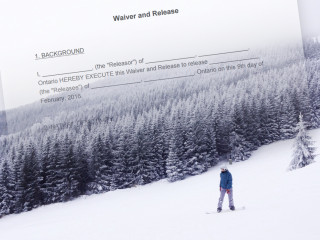This past year the app-based ride sharing service, Uber has come to Canada. Uber denies that it is a commercial transportation company; rather, it describes itself as a technology company only offering a matchmaking service to connect riders with drivers. Uber is currently operating in Toronto and Ottawa. Uber operates through a smart phone app or web browser. If someone needs a ride, the person requests one through the app and the nearest Uber driver responds to the request. The person can track the Uber vehicle through the app to see how close the Uber vehicle is and estimated time of arrival. Uber calculates the estimated fare ahead of time and transfers the money electronically; there is no physical exchange of money. Many people are no longer carrying cash so this is a convenient benefit. Further, Uber is typically cheaper than a comparable cab ride, since it cuts out many of the overhead costs associated with a fully licenced taxi cab company. Uber offers five levels of service. UberTAXI, UberSUV and UberBLACK require that drivers are commercially licenced and insured. The remaining two service levels (UberX and UberXL) are separated by vehicle size but can be driven by anyone over the age of 21 with personal auto insurance and a well maintained vehicle.
For UberX drivers, their personal auto insurance will almost certainly not cover them and their passengers in an accident. Almost every personal auto insurance policy includes the condition that the vehicle is only for personal use – no commercial use is permitted. This has been a potential problem in the United States. In Canada Uber has responded to this insurance problem. According to Uber Canada, every ride on the UberX platform in Canada is backed by $5,000,000 of contingent auto liability insurance covering bodily harm and property damage. You can read more about Uber operating in Canada at blog.uber.com/CanadaXSafety.
The UberX contingent auto insurance has not been tested in Canada (as far as we are aware). Notwithstanding the information from Uber, the insurer may still try and argue that the use of the vehicle voids the insurance. Until there is a case involving an UberX vehicle we cannot know for sure how the insurer will respond. There is also the risk to the UberX driver and his or her personal auto insurance. The driver is at risk of having his or her insurance cancelled for non-disclosure of participating in a commercial ride sharing business. Further, if the driver is in breach of the insurance contract, the driver may be personally liable for injuries to passengers and third parties. If the driver is injured, his or her access to no-fault accident benefits will be limited. For drivers, is the extra money worth the heavy risk?
Apart from insurance concerns, since Uber is not regulated, there is no assurance that the vehicles are being well maintained and meeting all road safety requirements. Consider for a moment that you are getting into a vehicle with a complete stranger with no information as to the safety of the driver or the vehicle. At least in a regulated taxi cab you have some assurance that the vehicle and driver have passed the minimum safety regulations.
What about the risk to the general public of a fleet of distracted drivers on the road? In early 2014, an UberX driver out looking for paying customers hit a family in San Francisco crosswalk, killing a 6-year old girl and injuring her brother and mother. The mother reported having seen the driver looking at a glowing screen just before he hit them. Is Uber responsible for this tragedy? Uber says no. Uber put out a statement after the tragic incident saying that the driver “was not providing services on the Uber system during the time of the accident.” But what is defined as providing services? Just because the driver did not have passengers in the vehicle at the time he ran into the family doesn’t mean he was not providing services on the Uber system. If the Uber drivers are out driving around and available, even if they are not specifically driving passengers around, they are still arguably providing services as they are available to be pinged by riders on the Uber system.
These are all difficult questions that will need to be answered in the coming months and years as ride sharing businesses grow and become more popular. While Uber offers convenience, flexibility and a cheaper ride, remember that you may be riding at your own risk.
Contributed by Kris Bonn, an OTLA Director and lawyer practising with Bonn Law Office PC in Trenton, ON.













